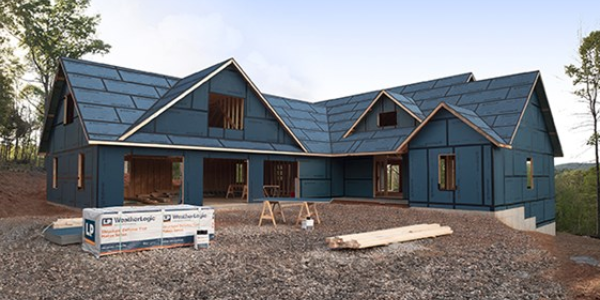What Are Radiant Heat Barriers?

By Cass Jacoby.
Why those living in hot climates should consider adding a radiant heat barrier to their attic insulation.
Many cities across the country experience temperatures higher than 90 degrees for more than 67 days a year. For these homeowners, an obvious priority becomes making sure the home stays cool and comfortable.
However, this also means that energy efficiency becomes a top concern. Cooling a home in a hot climate can add up to significant energy expenses, so it is no wonder those who live in a hot climate are looking for new ways to keep energy costs under control.
So how do you keep your home as energy efficient as possible?
Homeowners looking to build more energy efficient buildings in hot and dry climates need a radiant barrier. A radiant heat barrier is a type of insulation made of a highly reflective material that reflects radiant heat rather than absorbing it, making your attic look like a 60’s sci-fi spaceship set.
Energy.gov explains that where most common insulation materials work by slowing conductive heat flow and — to a lesser extent — convective heat flow, radiant barriers work by reducing the radiant heat gain from the underside of the roof. As a result, temperatures in the attic are reduced, which helps keep cooling costs down.
Different from the cool roof strategy that reflects solar energy before it hit the roof, a radiant barrier keeps the solar energy from traveling farther downwards. Thus, hot climates where the sun is beating down on the roof almost constantly and the roof sees the greatest results of applying a radiant heat barrier.
According to a 2010 study by the Building Envelope Research Program of the Oak Ridge National Laboratory, homes that feature an air-conditioning duct in the attic of the hottest climate zones benefit the most from radiant barrier interventions, with annual utility bill savings up to $150.
Considering that the cost to install radiant barrier insulation is about $1,700 on average according to Angi, and the lifespan of a radiant barrier exceeds ten years with no loss of emissivity according to radiantbarrier.com, this type of heat protection is rather cost effective.
If you live in a hot climate, consider a radiant heat barrier to help curb cooling costs and make your home more energy efficient while remaining affordable and easy to install in open air attics.
Have a question? AskARoofer.
Find your local roofing contractor in the RoofersCoffeeShop® Contractor Directory.
About Cass
Cass works as a reporter/writer for RoofersCoffeeShop and AskARoofer. When she isn’t writing about roofs, she is writing about movies for her master's degree and dancing with her plants.










Comments
Leave a Reply
Have an account? Login to leave a comment!
Sign In